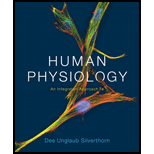
Concept explainers
Identify as many pairs of antagonistic muscle groups in the body as you can. If you cannot name them, point out the probable location of the flexor and extensor of each group.
To determine: The pairs of antagonistic muscle groups present in the human body.
Introduction: Muscles are the bundle of fibrous tissue present in the body of an organism. The muscles are responsible for the contraction, movements and maintaining the position of different body parts.
Explanation of Solution
Antagonistic muscles are the group of muscles that move bones in the opposite direction. This is because the muscle contraction can pull the bone, but it can not push the bone away. The antagonistic group of muscles consists of flexor and extensor pair of muscle.
Some of the antagonistic muscle groups are as follows:
- Biceps and triceps muscle.
- Hamstring and quadriceps muscles.
- Tibialis anterior and gastrocnemius muscles.
Thus, biceps and triceps muscle; hamstring and quadriceps muscles; and tibialis anterior and gastrocnemius muscles are some of the antagonistic muscles present in a body.
To determine: The location of flexor and extensor muscles in antagonistic muscle groups.
Introduction: Flexor muscles bring the bones close together after contraction. This movement of contraction of flexor muscles is called flexion. On the other hand, extensor muscles move away the bone from each other after contraction. The movement of contraction of extensor muscles is called extension.
Explanation of Solution
Some of the antagonistic muscle groups with their location are as follows:
- Biceps and triceps muscle present in the upper arm. Biceps are flexor muscles, whereas triceps are extensor muscles.
- Hamstring and quadriceps muscles present in the upper leg in which hamstring are flexor muscles and quadriceps are extensor muscles.
- Tibialis anterior and gastrocnemius muscles are present in the ankle for the foot movement. Tibialis anterior is the flexor muscle, whereas gastrocnemius is the extensor muscles.
Thus, biceps, hamstring and tibialis anterior are the flexor muscles whereas triceps, quadriceps and gastrocnemius are the extensor muscles.
Want to see more full solutions like this?
Chapter 12 Solutions
Human Physiology: An Integrated Approach (7th Edition)
- In one paragraph show how atoms and they're structure are related to the structure of dna and proteins. Talk about what atoms are. what they're made of, why chemical bonding is important to DNA?arrow_forwardWhat are the structure and properties of atoms and chemical bonds (especially how they relate to DNA and proteins).arrow_forwardThe Sentinel Cell: Nature’s Answer to Cancer?arrow_forward
- Molecular Biology Question You are working to characterize a novel protein in mice. Analysis shows that high levels of the primary transcript that codes for this protein are found in tissue from the brain, muscle, liver, and pancreas. However, an antibody that recognizes the C-terminal portion of the protein indicates that the protein is present in brain, muscle, and liver, but not in the pancreas. What is the most likely explanation for this result?arrow_forwardMolecular Biology Explain/discuss how “slow stop” and “quick/fast stop” mutants wereused to identify different protein involved in DNA replication in E. coli.arrow_forwardMolecular Biology Question A gene that codes for a protein was removed from a eukaryotic cell and inserted into a prokaryotic cell. Although the gene was successfully transcribed and translated, it produced a different protein than it produced in the eukaryotic cell. What is the most likely explanation?arrow_forward
- Molecular Biology LIST three characteristics of origins of replicationarrow_forwardMolecular Biology Question Please help. Thank you For E coli DNA polymerase III, give the structure and function of the b-clamp sub-complex. Describe how the structure of this sub-complex is important for it’s function.arrow_forwardMolecular Biology LIST three characteristics of DNA Polymerasesarrow_forward
 Human Physiology: From Cells to Systems (MindTap ...BiologyISBN:9781285866932Author:Lauralee SherwoodPublisher:Cengage Learning
Human Physiology: From Cells to Systems (MindTap ...BiologyISBN:9781285866932Author:Lauralee SherwoodPublisher:Cengage Learning Human Biology (MindTap Course List)BiologyISBN:9781305112100Author:Cecie Starr, Beverly McMillanPublisher:Cengage Learning
Human Biology (MindTap Course List)BiologyISBN:9781305112100Author:Cecie Starr, Beverly McMillanPublisher:Cengage Learning Medical Terminology for Health Professions, Spira...Health & NutritionISBN:9781305634350Author:Ann Ehrlich, Carol L. Schroeder, Laura Ehrlich, Katrina A. SchroederPublisher:Cengage LearningLifetime Physical Fitness & WellnessHealth & NutritionISBN:9781337677509Author:HOEGERPublisher:Cengage
Medical Terminology for Health Professions, Spira...Health & NutritionISBN:9781305634350Author:Ann Ehrlich, Carol L. Schroeder, Laura Ehrlich, Katrina A. SchroederPublisher:Cengage LearningLifetime Physical Fitness & WellnessHealth & NutritionISBN:9781337677509Author:HOEGERPublisher:Cengage





